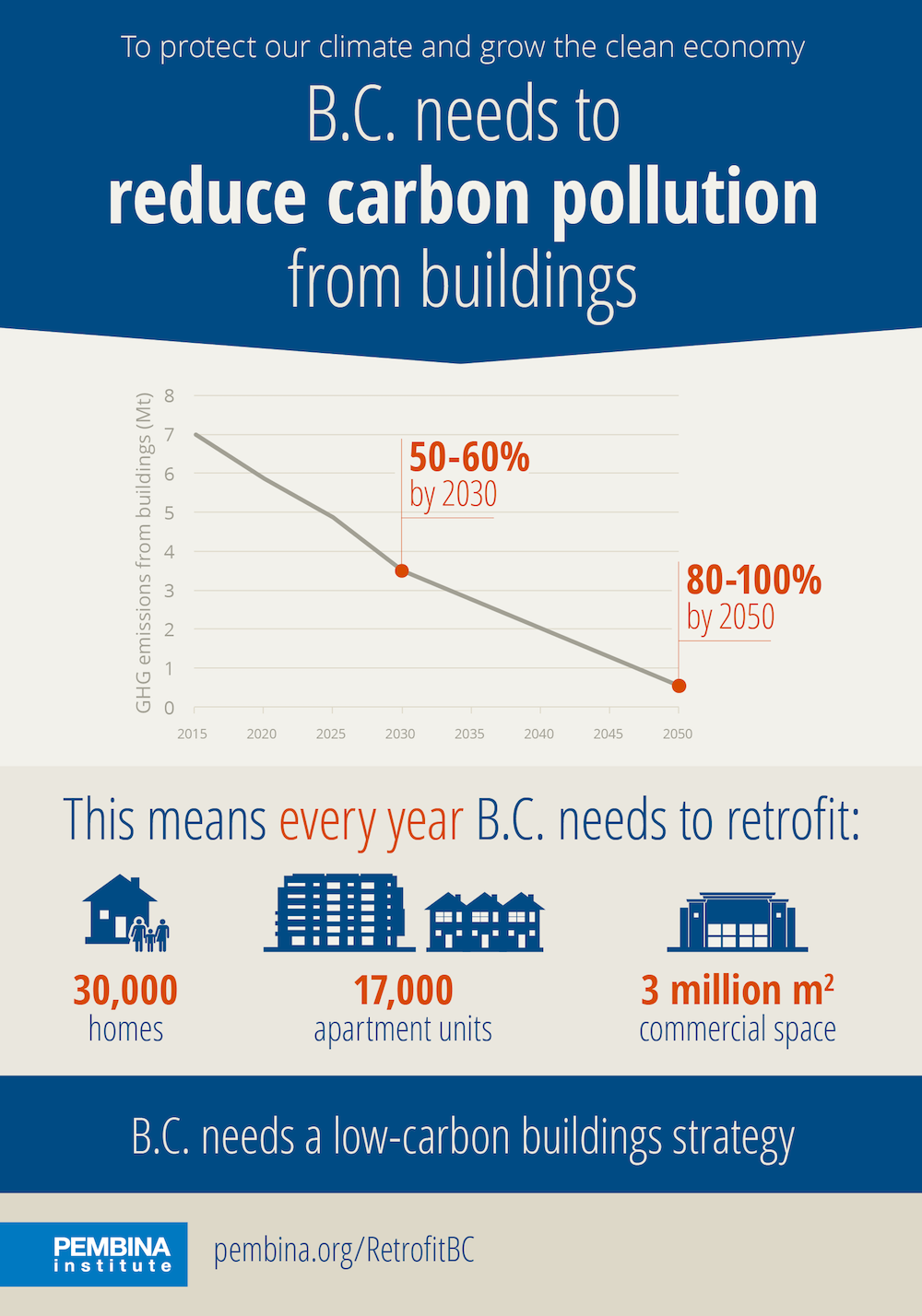The cooler, wetter weather is sure welcome after a hot, smokey summer. Nevertheless, it ushered in a period of uncertainty. Long or short sleeves? Socks or sandals? Should we blow the dust out of the heat ducts and power up the radiator?
What if you could put off the last decision until the coldest days of winter? Low-carbon, energy-efficient homes promise to make this a reality for all. Other potential benefits of efficient apartments and houses include enhanced comfort and health as well as reduced fuel demand — saving you money on heating bills and lowering climate-damaging carbon pollution.
Reducing heating and cooling demands from buildings is a goal of the B.C. Energy Step Code (championed by the Three for All B.C. coalition) and the City of Vancouver’s Renewable City Action Plan and Zero Emissions Building Plan. These leading-edge policies focus on the construction of new buildings.
What about the existing building stock? After all, it’s estimated 70 per cent of buildings standing today will still be in use as of 2050. Unless we take action, homes and buildings constructed without regard for energy efficiency, carbon pollution, or air quality will continue to waste energy and cough up emissions until our children’s children are adults.
The good news is the benefits of healthier, less polluting homes and workplaces can be realized in both new and old buildings. There’s no time to waste: making our homes and buildings energy-efficient, healthy, safe, and affordable should be the next megaproject for B.C.
One exciting solution is the Energiesprong model. Originated in the Netherlands, Energiesprong takes an aggregated approach to housing upgrades and turns the problem of inefficient buildings on its head. The combination of drafty old buildings and the responsibility to meet climate targets is core to the market opportunity targeted by Energiesprong, and the idea is catching on.
Earlier this year, the Energiesprong concept was recognized as a cutting-edge innovation with a prestigious award from the World Green Building Council. And if imitation is the highest form of flattery, Energiesprong must be blushing.
From Europe (France, Germany, and the U.K.) to North America (B.C., Ontario, and New York), the Energiesprong model is being replicated — and for good reason. In a few years, Energiesprong has retrofitted more than 5,000 homes (with 15,000 more underway) in the Netherlands, reduced installation to one day from several weeks, and established a self-sustaining market. New York’s RetrofitNY program is laying a foundation for this vital transformation in the North American market, and the Pembina Institute is watching closely.
North American buildings are designed with 50-year lifespans in mind, and many of their components need to be replaced every 20 years. To make good on its climate goals, B.C. must reduce carbon pollution from buildings by 50 to 60 per cent below 2007 levels by 2030. Layer on concerns about seismic resilience, affordable housing, and community character, and it’s evident a market-scale overhaul of the existing building stock should be at the top of B.C.’s priority list.
Unfortunately, simply employing cutting-edge technologies and politely asking owners to upgrade their buildings won’t do the job. B.C.’s task at hand is retrofitting 30,000 houses, 17,000 apartment units, and 3 million square feet of commercial space every year between now and 2050. Meeting these goals will require private and public investment of up to $1 billion per year. This megaproject could create over 10,000 sustainable jobs across the province and generate $4-8 billion in GDP growth.
So far, the province seems headed in the right direction, as evidenced by the government’s recent clean growth intentions paper on the building sector. In response, the Pembina Institute recommended introducing a retrofit strategy, including a regulatory framework and financing mechanisms, to accelerate the upgrading of existing buildings.
Capable of delivering rapid market transformation, the Energiesprong approach to retrofits offers a key opportunity to get B.C. back on track to its climate targets while reaping the benefits of healthier homes and green jobs. Energiesprong stimulates innovation, scales up implementation, and incubates local supplier and labour markets. We can lower our energy consumption while diversifying our economy and cornering an emerging market.
This is a prime example of the bold action we need to see in this fall’s B.C. clean growth strategy. Making our homes and buildings resilient is a megaproject all British Columbians can get behind.
Betsy Agar is senior analyst for buildings and urban solutions at the Pembina Institute, Canada’s leading clean energy think-tank.
This article also appears on Building magazine’s website.










